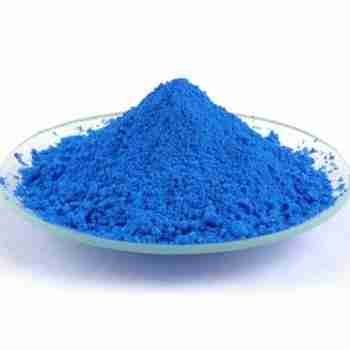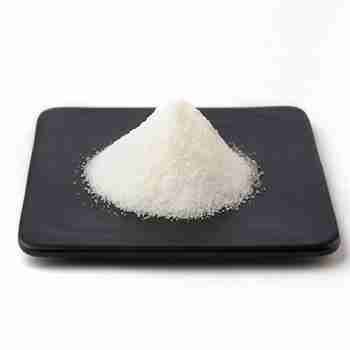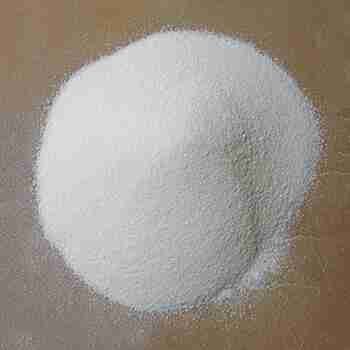C-Phycocyanin Cas 11016-15-2
Chemical Name: C-Phycocyanin
CAS No.: 11016-15-2
Molecular weight:?426.67
Appearance: BLUE POWDER
Assay??80%
发送询盘
Description
C-PHYCOCYANIN Quick Details
Chemical Name: C-Phycocyanin
CAS No.: 11016-15-2
Molecular Fomula:/
Chemical Structure:/
Molecular weight:?426.67
Appearance: BLUE POWDER
Assay??80%
PHYCOCYANINTypical Properties
Appearance
Blue?powder
Odor/Taste
Characteristic
Solubility
Water soluble
Impurity
None visible?impurity
Color value
??250unit
Loss?on?drying
??7.0%
Protein?(g/100g)
15-70%
Phycocyanin?(g/100g)
10-60%
Lead?(Pb)
??0.9?(mg/kg)
Arsenic?(As)
??0.5?(mg/kg)
Mercury?(Hg)
??0.05?(mg/kg)
Total?plate count
??1000?(CFU/g)
Mold*
??300?(CFU/g)
Coliforms
??10?(CFU/g)
C-PHYCOCYANIN??application:
The application research of phycocyanin is very common and can be summarized in the following aspects: (1) Natural food pigments: Phycocyanin is a water-soluble pigment, pure blue, clear and lovely, and can be used as a food colorant and additive in cosmetics. And it is very rich in protein itself. (2) Medical and health food: In vitro experiments of phycocyanin have proven that it can stimulate the formation of red blood cell colonies, similar to the effect of erythropoietin (EPO). Phycocyanin can help regulate the synthesis of a variety of important enzymes needed by the human body, and plays an important role in inhibiting the growth of cancer cells. It can also regulate the body??s immune system, enhance the function of the immune system, and improve the body??s resistance to disease. (3) Cosmetics field: Phycocyanin is a collagen-like protein with antioxidant, moisturizing, anti-allergic, and freckle removal effects. (4) Special reagents for biology, chemistry and cytology experiments: Phycocyanin is blue and fluorescent, and can be used as a reagent for some photodynamic research in biology and cytology. It can also be used as a biochemical marker.
C-PHYCOCYANIN?Packaging and Shipping?
customized according to customer needs.
C-PHYCOCYANIN?Storage
It should be stored in a clean, dry and cool place, preventing from sunlight, rain.
| 5 |
|
0 |
| 4 |
|
0 |
| 3 |
|
0 |
| 2 |
|
0 |
| 1 |
|
0 |
- 2
- 2-diallylpent-4-en-1-amine
- 4
- 95-16-9
- Ammonium sulfamate
- Benzothiazole
- cas:67889-00-3ح2
- cas:83524-75-8 | pigment black 32
- cas:928836-00-4 | 2
- cas:932745-70-5 | 4
- Chemical Minerals
- Coconut diethanolamide
- Daily Chemicals
- discount
- for sale
- General pvc resin
- hexyl D-glucoside
- in stock
- Lauramidopropyl betaine
- LAURIC ACID MONOETHANOLAMIDE
- Petroleum Additives
- Plasticiser
- Ploymers
- price
- PVC
- quotation
- Raw Materal
- Remove term: Petroleum Additives Petroleum Additive
- SODIUM ETHYL 2-SULFOLAURATE
Related Products
Chemical Name: beta-NADH disodium salt
Other name: beta-Nicotinamide adenine dinucleotide disodium salt
CAS No.: 606-68-8
Molecular Fomula: C21H30N7NaO14P2
Molecular weight:?689.44
Appearance:?white to light yellow powder
Assay: 95%min
Ectoine is a naturally occurring osmoprotectant, a cyclic amino acid derivative that offers exceptional cell-stabilizing properties. Highly valued in cosmetics and pharmaceuticals, it enhances product efficacy by maintaining cell integrity under various environmental stresses.
Chemical Name: o-Xylene
Synonyms: 1,2-Dimethylbenzene; ortho-xylene
CAS No.: 95-47-6
Molecular Formula: C8H10
Molecular Weight: 106.17
Chemical Name: 1,1,2,2-Tetrachloroethane
Other Name: Tetrachlorethane
CAS No.: 79-34-5
Molecular Formula: C2H2Cl4
Molecular Weight: 167.85
Appearance: Liquid
Polyglutamic acid (y-PGA), also known as natto gum, is a high molecular peptide polymer synthesized from several glutamic acid monomers through microbial fermentation. It is rich in glutamic acid, glucose, protein and minerals. , vitamins and other biologically active substances.
Polyglutamic acid (??-PGA) is a sticky substance that was first discovered in ??Natto??. It is currently widely used in agricultural production and is called a new biostimulant. It is fully water-soluble, biodegradable, edible, and non-toxic. It is a biopolymer produced by microbial fermentation.
Chemical Name: N-Acetyl-D-mannosamine
Cas: 7772-94-3
MF: C8H15NO6
MW: 221.21
Appearance: White to off-white powder
Chemical Name: Imazalil Sulfate
CAS No.: 58594-72-2
Molecular Formula: C14H14Cl2N2O.H2SO4
Molecular Weight: 395.26
Appearance: Solid
Copper acetate peptide, also known as blue copper peptide. Copper peptide, also known as tripeptide in Chinese; Glycyl-L-histomyl-L-lysine. Peptide is a small molecule protein composed of amino acids, which are more easily absorbed by the skin and have more significant effects. It was first isolated from human plasma in 1973 and was discovered to have wound repair function in 1985. In 1999, researchers believed that copper peptide and its copper repair products can serve as activators of tissue remodeling, and it is also a signaling peptide, Promote the degradation of a large amount of collagen aggregates outside scars, the synthesis of normal collagen in the skin, the generation of elastin, proteoglycans, and glucosamine glycans, the growth rate and migration of different cell types, anti-inflammatory, and antioxidant responses.
Common English name: 5-iodo-2,3-dihydropyridazin-3-one
CAS No.: 825633-94-1
Molecular formula: C4H3IN2O
Molecular weight: 221.98
Sample: Available
Chemical Name:?UDP-glucuronic acid
CAS No.: 2616-64-0
Molecular Fomula: C15H22N2O18P2
Molecular weight: 580.28
Appearance: Solid
Assay: 98%
Chemical Name: Ammonium Iron(II) Sulfate
Synonyms: Diammonium iron bis(sulphate); iron (ii) ammonium sulfate
CAS No.: 10045-89-3
Molecular Formula: FeH5NO4S
Molecular Weight: 170.95
Chemical Name: Choline salicylate
CAS No.: 2016-36-6
Molecular Formula: C12H19NO4
Molecular Weight: 241.28
Appearance: Red-Brown Crystal



















Reviews
There are no reviews yet.